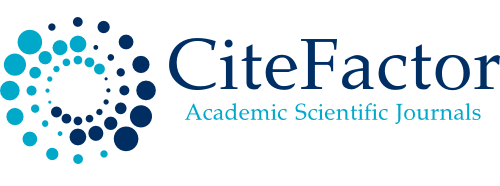The effect of the random and sequential exercise method on learning and accquiring the performance of the tennis forehand
DOI:
https://doi.org/10.61841/f94sd570Keywords:
random exercise, sequential exercise, acquisition, tennisAbstract
The methods of modern scientific development have included various fields of life, and scientific applications have begun to take a wide space to create a developed and renewable world, investing all scientific methods and means in all areas of life, including the field of physical education, to reach the advanced scientific achievement. Hence the importance of the research to put practical steps in front of those interested in the educational process in general and tennis in particular to be a guide for teachers by recognizing the preference of any of the random and sequential exercise methods in learning and acquiring the performance of the forehand and knowing which of the methods are more influential in the learning process, which helps to facilitate In the process of learning and economy in effort, and the research problem lies, the researcher chooses some methods of scheduling the exercise and uses them to teach the skills of the game of tennis.
Downloads
References
1. Amer Rashid seven. Skill learning using the aggregate and distributed method under different training systems and stress conditions, PhD thesis, University of Baghdad: College of Physical Education, 1998.
2. Dhafer Hashem Ismail; Technical and schematic issues in tennis, 2nd floor (Baghdad, Dar AlHafiz for printing, publishing, and translation, 2003).
3. http://www.itftennis.com/itn/oncourtassessment, 2010
4. Osama Kamel Rateb; Mathematical Psychology: Concepts and Applications (Cairo, Arab Thought House, 1997).
5. Osama Kamel Rateb; Psychological preparation for training youth, guide for coaches and parents, 1st edition, Cairo, Dar Al-Fikr Al-Arabi, 1997.
6. Schmidt & Wrsberge, Motor Learning and Performance, IL. Human Kinetics, 2004.
7. Schmidt, A. Richard & Craig Wrisberg, Motor learning and performance: (zed, edition), Human Kinetics, 2000.
8. Schmidt, A. Richard: Motor learning and performance: (Human kinetics book, champaigh, llinois, 1991)
9. Wajeeh Mahgoub; Kinesiology and Kinetic Learning (Mosul University Press, 1989).
10. Wajih Mahgoub (et al.); Learning theories and motor development (Amman, Dar Wael for Publishing and Distribution, 2002).
Downloads
Published
Issue
Section
License
Copyright (c) 2020 AUTHOR

This work is licensed under a Creative Commons Attribution 4.0 International License.
You are free to:
- Share — copy and redistribute the material in any medium or format for any purpose, even commercially.
- Adapt — remix, transform, and build upon the material for any purpose, even commercially.
- The licensor cannot revoke these freedoms as long as you follow the license terms.
Under the following terms:
- Attribution — You must give appropriate credit , provide a link to the license, and indicate if changes were made . You may do so in any reasonable manner, but not in any way that suggests the licensor endorses you or your use.
- No additional restrictions — You may not apply legal terms or technological measures that legally restrict others from doing anything the license permits.
Notices:
You do not have to comply with the license for elements of the material in the public domain or where your use is permitted by an applicable exception or limitation .
No warranties are given. The license may not give you all of the permissions necessary for your intended use. For example, other rights such as publicity, privacy, or moral rights may limit how you use the material.









